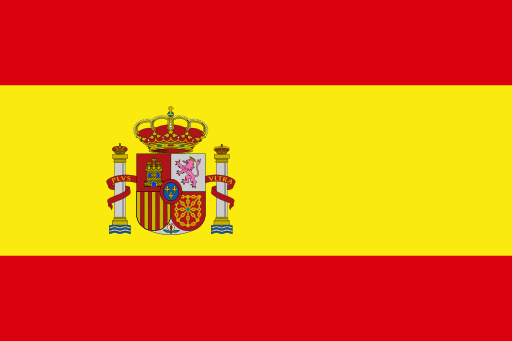|
|
 |
Articles
|
|
Dating
|
|
|
Dating as an institution is a relatively recent phenomenon which has mainly emerged in the last few centuries. From the standpoint of anthropology and sociology, dating is linked with other institutions such as marriage and the family which have also been changing rapidly and which have been subject to many forces, including advances in technology and medicine. As humans have evolved from hunter-gatherers into civilized societies and more recently into modern societies, there have been substantial changes in the relationship between men and women, with perhaps one of a few remaining biological constants being that both adult women and men must have sexual intercourse for human procreation to happen.
Humans have been compared to other species in terms of sexual behavior. Neurobiologist Robert Sapolsky constructed a reproductive spectrum with opposite poles being tournament species, in which males compete fiercely for reproductive privileges with females, and pair bond arrangements, in which a male and female will bond for life. According to Sapolsky, humans are somewhat in the middle of this spectrum, in the sense that humans form pair bonds, but there is the possibility of cheating or changing partners. These species-particular behavior patterns provide a context for aspects of human reproduction, including dating. However, one particularity of the human species is that pair bonds are often formed without necessarily having the intention of reproduction. In modern times, emphasis on the institution of marriage, generally described as a male-female bond, has obscured pair bonds formed by same-sex and transsexual couples, and that many heterosexual couples also bond for life without offspring, or that often pairs that do have offspring separate. Thus, the concept of marriage is changing widely in many countries.
Historically, marriages in most societies were arranged by parents and older relatives with the goal not being love but legacy and "economic stability and political alliances", according to anthropologists.[5] Accordingly, there was little need for a temporary trial period such as dating before a permanent community-recognized union was formed between a man and a woman. While pair-bonds of varying forms were recognized by most societies as acceptable social arrangements, marriage was reserved for heterosexual pairings and had a transactional nature, where wives were in many cases a form of property being exchanged between father and husband, and who would have to serve the function of reproduction. Communities exerted pressure on people to form pair-bonds in places such as Europe; in China, society "demanded people get married before having a sexual relationship" and many societies found that some formally recognized bond between a man and a woman was the best way of rearing and educating children as well as helping to avoid conflicts and misunderstandings regarding competition for mates.
The clandestine meeting between Romeo and Juliet in Shakespeare's play. Painting by Sir Frank Dicksee, 1884
Generally, during much of recorded history of humans in civilization, and into the Middle Ages in Europe, weddings were seen as business arrangements between families, while romance was something that happened outside of marriage discreetly, such as covert meetings. The 12th-century book The Art of Courtly Love advised that "True love can have no place between husband and wife." According to one view, clandestine meetings between men and women, generally outside of marriage or before marriage, were the precursors to today's dating.
From about 1700 a worldwide movement perhaps described as the "empowerment of the individual" took hold, leading towards greater emancipation of women and equality of individuals. Men and women became more equal politically, financially, and socially in many nations. Women eventually won the right to vote in many countries and own property and receive equal treatment by the law, and these changes had profound impacts on the relationships between men and women. Parental influence declined. In many societies, individuals could decide—on their own—whether they should marry, whom they should marry, and when they should marry. A few centuries ago, dating was sometimes described as a "courtship ritual where young women entertained gentleman callers, usually in the home, under the watchful eye of a chaperone," but increasingly, in many Western countries, it became a self-initiated activity with two young people going out as a couple in public together. Still, dating varies considerably by nation, custom, religious upbringing, technology, and social class, and important exceptions with regards to individual freedoms remain as many countries today still practice arranged marriages, request dowries, and forbid same-sex pairings. Although in many countries, movies, meals, and meeting in coffeehouses and other places is now popular, as are advice books suggesting various strategies for men and women, in other parts of the world, such as in South Asia and many parts of the Middle East, being alone in public as a couple with another person is not only frowned upon but can even lead to either person being socially ostracized.
In the twentieth century, dating was sometimes seen as a precursor to marriage but it could also be considered as an end-in-itself, that is, an informal social activity akin to friendship. It generally happened in that portion of a person's life before the age of marriage,[10] but as marriage became less permanent with the advent of divorce, dating could happen at other times in peoples lives as well. People became more mobile. Rapidly developing technology played a huge role: new communication technology such as the telephone, Internet and text messaging enabled dates to be arranged without face-to-face contact. Cars extended the range of dating as well as enabled back-seat sexual exploration. In the mid-twentieth century, the advent of birth control as well as safer procedures for abortion changed the equation considerably, and there was less pressure to marry as a means for satisfying sexual urges. New types of relationships formed; it was possible for people to live together without marrying and without children. Information about human sexuality grew, and with it an acceptance of all types of sexual orientations is becoming more common. Today, the institution of dating continues to evolve at a rapid rate with new possibilities and choices opening up particularly through online dating.
|
|
|






